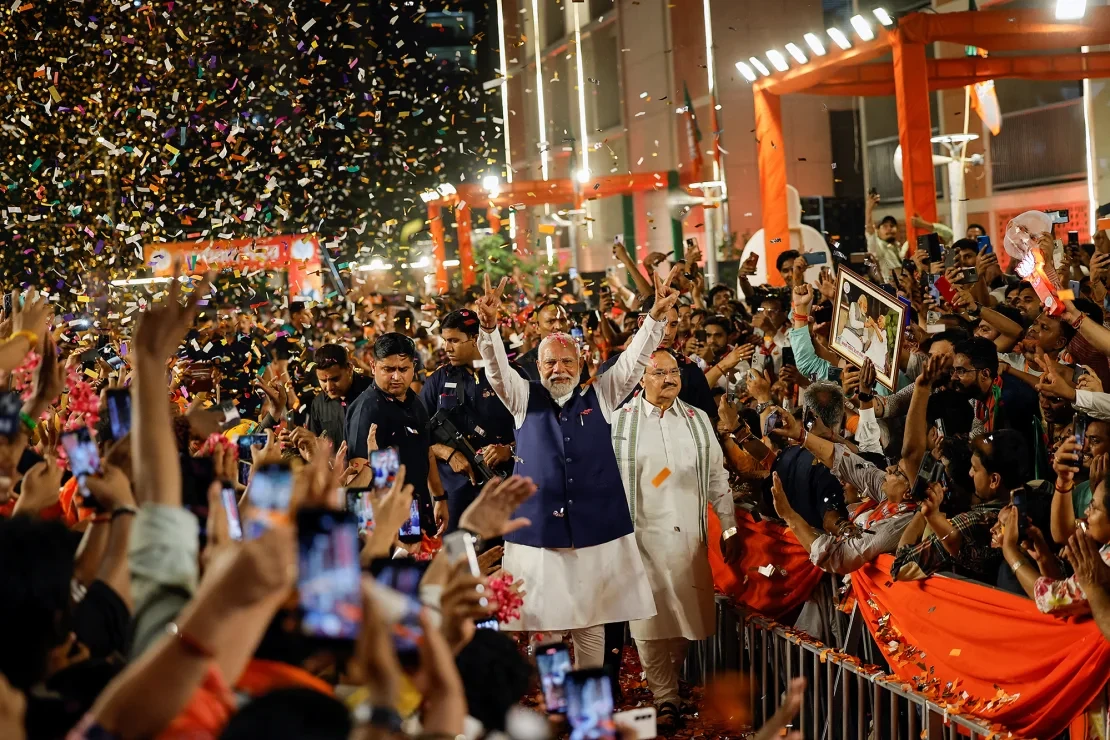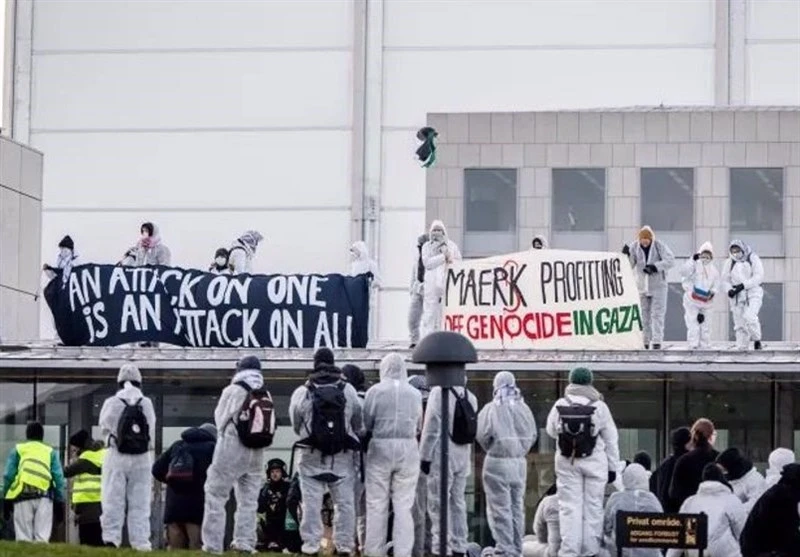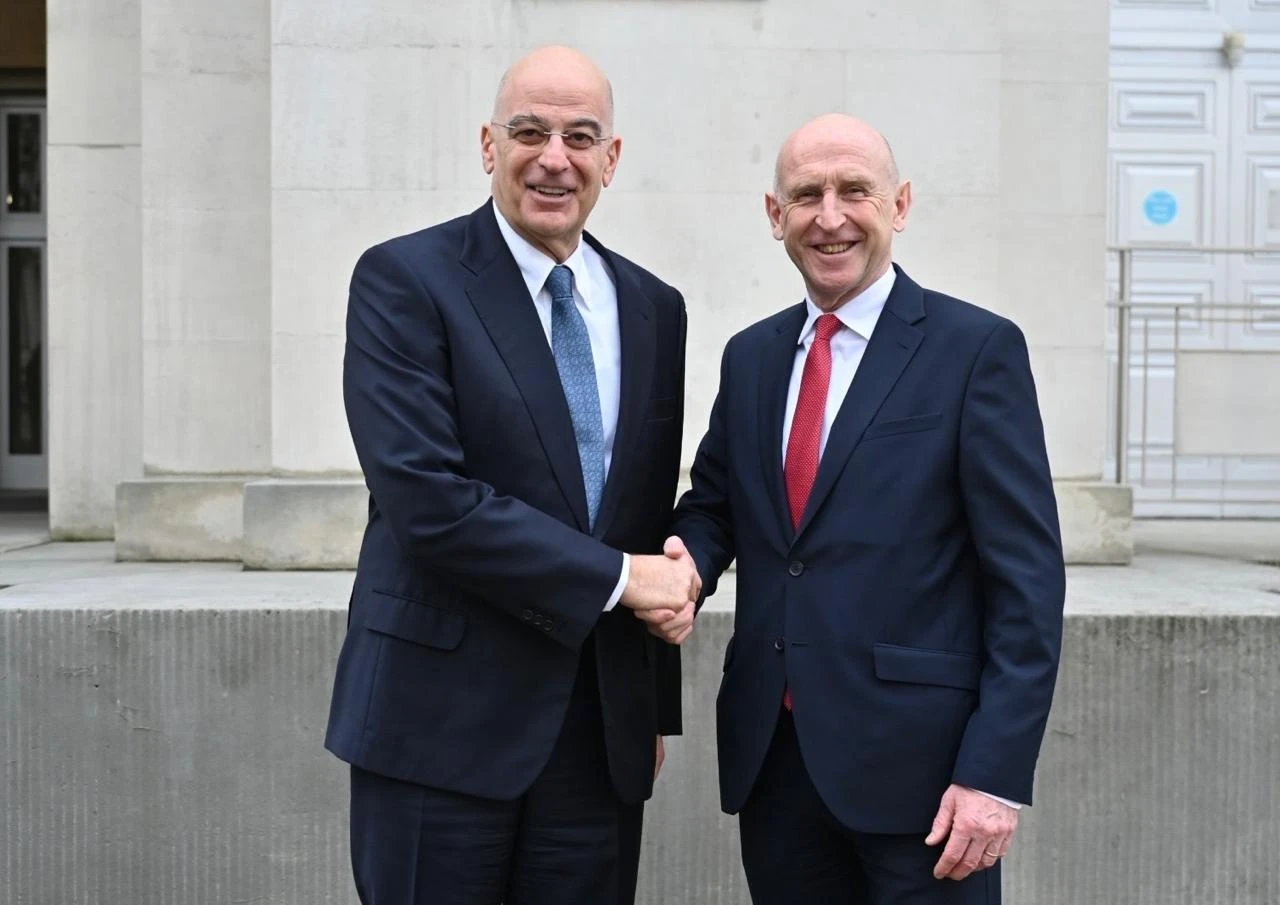India votes for cautious continuity
 Indian Prime Minister Narendra Modi gestures as he arrives at Bharatiya Janata Party (BJP) headquarters in New Delhi, India, June 4, 2024. (Reuters Photo)
Indian Prime Minister Narendra Modi gestures as he arrives at Bharatiya Janata Party (BJP) headquarters in New Delhi, India, June 4, 2024. (Reuters Photo)
In the aftermath of India’s recent national elections, Prime Minister Narendra Modi’s triumphant declaration of victory resonated across the political landscape. As Modi secured a third consecutive term, solidifying his position as one of the most successful politicians in post-independence India, Dr. Alok Bansal offers an insightful analysis, delving into the intricate dynamics of this electoral spectacle.
Planet’s largest electoral exercise: 642M votes cast
The vote counting on June 4, 2024, marked the conclusion of the election process that began on March 20 with the notification of the elections. The largest electoral exercise in the planet’s history saw 642 million voters cast their votes, although over 968 million were eligible to vote. Voting though widely encouraged, is voluntary in India and there are no incentives for voting or penalties for not doing so. The votes cast were one and half times the total votes of all G-7 countries and two and half times the votes of all 27 EU countries.

The polling process, which involved millions of personnel, was spread over seven rounds and began on April 19 and ended on June 1. Some 75 international observers from 23 countries observed the process and were extremely impressed by the meticulous planning and immaculate execution. The percentage of voters, who cast their votes was slightly above 60%. The low voter turnout was partially blamed on the severe heat wave sweeping through North India, where temperatures occasionally touched 50 degrees Celsius (122 degrees Fahrenheit) during the later phases.
Election results defy expectations
The results were equally startling. It was widely perceived before the elections that the ruling alliance, the National Democratic Alliance (NDA), led by Prime Minister Narendra Modi and his political party Bharatiya Janata Party (BJP), would sweep through the polls.
Prime Minister Modi raised the bar with a slogan that claimed this time BJP (not NDA) alone will get more than 400 seats, out of a total of 544. NDA has been in power since 2014 when it came to power with a thumping majority of 336. BJP alone got 282 seats. This was further improved in 2019 when NDA got 353 seats and BJP alone went up to 303. In both these elections, the BJP had a clear majority in the parliament, although it did include the government members from its alliance partners.
Modi’s achievements and popularity
These results were reflective of the euphoria prevailing in India, where India scaled new heights under Modi and became the fifth-largest economy in the world.
Dr. Alok Bansal
The country achieved significant advancements in digital literacy and is among the global leaders in digital financial transactions. Modi to his credit rolled out nationwide general sales tax and ushered in social security schemes for those at the bottom of the economic pyramid.

He focussed on infrastructural developments and consequently increased industrial production and trade significantly. Indian exports peaked and Indian foreign exchange reserves reached a new high. BJP also worked toward assuaging the Hindu majority, who felt that the previous regimes were mollycoddling the minorities, especially Muslims. He ensured that a long pending demand of Hindus to set up a temple at the birthplace of Lord Ram in Ayodhya in Uttar Pradesh (UP), the state with the largest number of parliamentary seats was fulfilled.
Modi’s leadership image
Modi is also perceived by the majority as a leader, who is incorruptible, decisive, and strong. His assertive foreign policy and security postures have helped to create a macho image, which has been further bolstered by his frequent visits to soldiers in the border areas.
Dr. Alok Bansal

He has focussed on enhancing defense capabilities and border infrastructure. His decisive actions in terminating the special status of Jammu and Kashmir were widely appreciated throughout the length and breadth of India. On the foreign policy front, he has established good personal relations with most world leaders, including the U.N. Security Council’s five permanent members (P-5). He has taken India’s relationship with the states of the Persian Gulf to a new high and has reached out to the countries of Africa and the South Pacific. All these achievements have enhanced his popularity immensely.
On the other hand, the myriad opposition was in complete disarray, with no credible leader. More significantly, many of the opposition leaders were in jail on account of various scams.
Dr. Alok Bansal
Unanticipated election outcome
It was therefore natural that Modi and BJP-led NDA were expected to sweep the polls and most of the exit polls accordingly forecasted around 400 seats for them. However, the results have proved all of them wrong.
Although, the NDA crossed the halfway mark of 272, by winning 293 seats, BJP was left stranded with 240 seats and is now dependent on its allies to form the government, which will restrict its policy options. Two major allies namely the regional Telugu Desam Party (TDP) and Janata Dal-United (JD(U)), have in the past, left NDA at different times. More significantly, these parties will seek important cabinet positions, which could result in Modi dropping some of his key allies. Consequently, after the results, most supporters of the BJP, despite being most likely to form the government were glum, while those of the opposition Indian National Developmental Inclusive (INDI) Alliance were quite upbeat, despite losing the elections.
Breakdown of election results
A quick analysis of the results is necessary to understand what happened in the elections. NDA tally of 293 included 240 of BJP, 16 of TDP from Andhra Pradesh (AP), and 12 of JD(U) from Bihar, on the other hand, INDI Alliance won 233 seats, which included 99 by the former ruling party India National Conference, a significant improvement over 44 and 52 seats won in 2014 and 2019 respectively. The other major components of the alliance are the Samajwadi Party (SP) which won 37 seats in UP, Trinamool Congress (TMC), which won 29 seats in West Bengal, Dravida Munnetra Kazhagam (DMK), which won 22 seats in Tamil Nadu. In both the alliances apart from BJP and the Congress, other major components won seats only in one state, although some parties with seats in single digits did garner them across different states.
Factors influencing election

In the elections, the opposition Congress managed to cobble up a rag-tag coalition, which gave NDA a tough fight in many states, even though its components contested against one another in some states. On the other hand, complacency coupled with bad weather resulted in low voting by NDA supporters. The opposition also managed to play on the fears of minorities and the deprived sections of society by successfully running a campaign which the BJP wanted an overwhelming majority to amend the constitution and end reservations (affirmative action). Consequently, NDA from getting the three-fourth majority ended up barely crossing the halfway mark.
Future governance and implications
It however, needs to be appreciated that NDA under Modi has managed to win three successive parliamentary elections, which has never happened since 1962 under Jawaharlal Nehru, the first prime minister of India.
Dr. Alok Bansal
The vast majority of the Indian populace has reposed their faith in Modi and his dynamic leadership. They expect him to lead India on the pathway to building a developed and vibrant nation. Nevertheless, the need to take the allies along will ensure a more centrist, liberal, and inclusive approach to governance.

Captain Alok Bansal is the director of the independent research centre India Foundation and the secretary general of the Asian Eurasian Human Rights Forum, an organization with ECOSOC status by UNESCO. He also serves on the Planning Board for the Union Territory of Ladakh.



